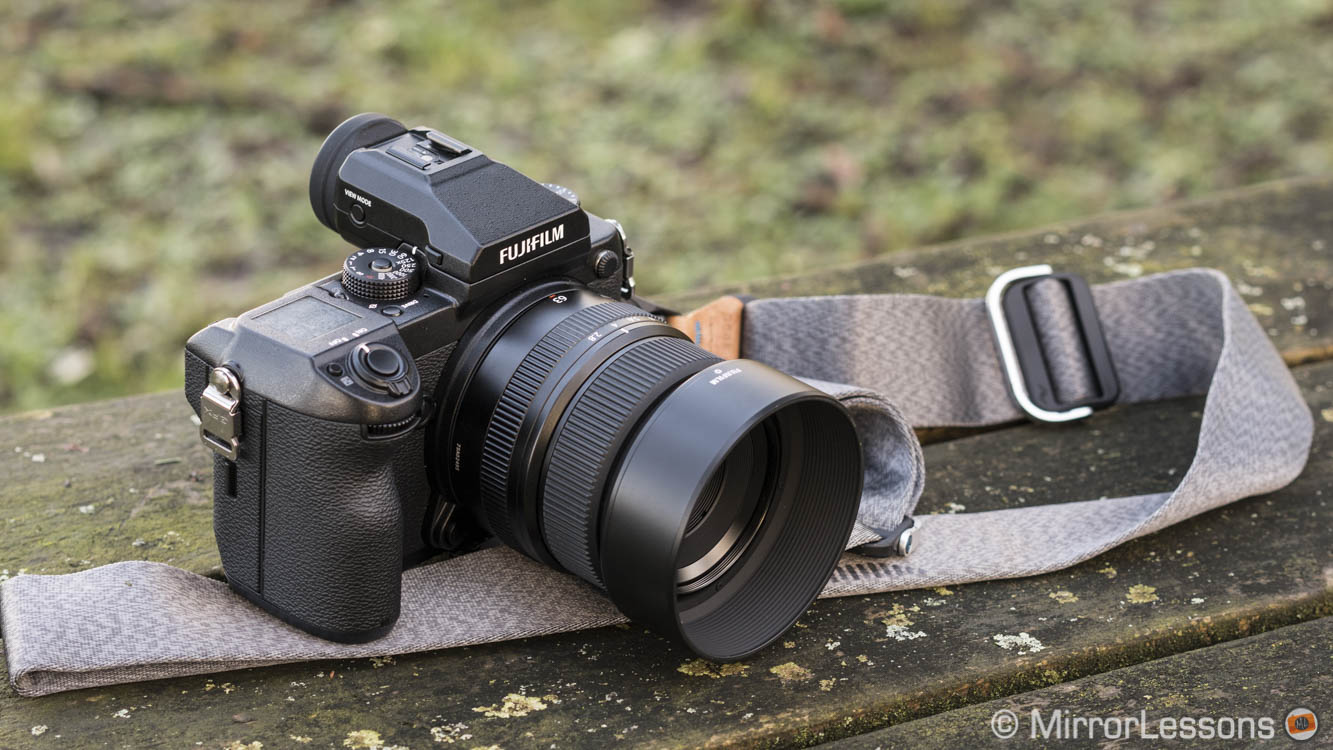The Fujifilm GFX 50s is the first medium format camera I’ve ever had the chance to review. I was really excited about the idea of trying it and seeing how the quality of a digital medium format sensor compared to the cameras I usually review. Luckily, I wasn’t disappointed. After using the GFX for almost three weeks, I can confirm that it was everything I hoped it would be and more!
Main Specs
- Sensor: 51.4MP medium format (43.8×32.9mm) CMOS
- Lens system: GF
- Weatherproof: Yes (dust, moisture and -10°C)
- Internal Stabilisation: No
- Autofocus: Contrast detection with 117 points
- Continuous shooting: 3fps with C-AF
- ISO Sensitivity: 100 – 12800 ISO (pull 50, push up to 102400)
- Shutter Speeds: 1/4000s to 4s, up to 1/16000s with electronic shutter, Bulb up to 60min
- Viewfinder: 0.5in OLED with 3,690k dots, 23mm eye point, 0.85x magnification and 60fps refresh rate
- Rear monitor: Tilting 3.2” LCD (2.36M dots) with touch sensitivity
- Movie recording: 1080p up to 30fps
- Built-in Flash: No
- Extra Features: WiFi, RAW Conversion, Bracketing, Tethering, Dual SD card
- Dimensions: 147.5 x 94.2 x 91.4mm
- Weight: 825g (including battery and memory card)
- Firmware version: 3.00
Video Review
As usual, our main review is in video format. You can see all our findings below!
Summary of our findings
- Image quality: the main reason you would want to consider one of these cameras. Sharpness and detail are outstanding, there’s great dynamic range in the shadows and highlights (especially when you use the DR200% and DR400% settings) and the colour profiles, as with all Fujifilm cameras, deliver distinctive results. The ISO performance is very good up to 3200, but then noise starts to become more invasive. The images are unusable past 12800.
- Lenses: I tested three primes (GF 23mm f/4, GF 63mm f/2.8, GF 110mm f/2) and was very pleased with the optical quality of all three. Sharpness is outstanding at the fastest apertures, distortion is minimal and there are very few aberrations of any kind. The only thing that can be invasive is flare in direct sunlight. However the fastest apertures are not enough to make a distinctive difference to shallow depth of field in comparison to 35mm format, if that’s what you’re after.
- Design and ease of use: comfortable and straightforward to use just like most other Fujifilm cameras. The camera is very well built, fully weather-sealed and has a very comfortable grip. The viewfinder offers a large magnification of 0.85x and lots of resolution. The top LCD screen is useful and can be customised. You’ll also find 10 function buttons, the Q menu and My Menu page. The only small criticism I have is the position of the focus mode selector – it would make more sense to place it on the front of the camera.
- Autofocus and speed: the GFX 50s is certainly not built for sports or action, but the contrast detection system did better than expected in most situations. The AF is not the fastest but is very accurate most of the time, with the only real limitation being strong backlit situations. It can shoot up to 3fps but the AF is locked on the first frame. The buffer is good if you shoot in JPG format but slows down dramatically with RAW files.
- Video and other features: you can record in 1080p up to 30fps but the footage has lots of aliasing and lacks tack sharpness but again, the camera is not designed for this purpose. You’ll find additional settings for AE bracketing, as well as an electronic first curtain and full electronic shutter. Fujifilm is also adding new things via firmware, like for example focus bracketing with version 3.0.
Conclusion
The Fujifilm GFX delivers the best image quality I’ve seen from a mirrorless camera so far. It’s comfortable and easy to use, and while it doesn’t shine when it comes to autofocus or video, it’s worth remembering that it hasn’t been designed for these purposes.
I also like the fact that Fujifilm decided to invest in a medium format system rather than opting for the 35mm route. It helps the GFX stand out more on the market and its price is very competitive for a medium format camera.
Would I buy one? Probably not – not because I don’t like it – but simply because I wouldn’t be able to take advantage of the high quality often enough to justify the investment. But for those who know how to make the most of it, there’s no doubt that it’s a wonderful photography tool to have by your side.
Sample Images













